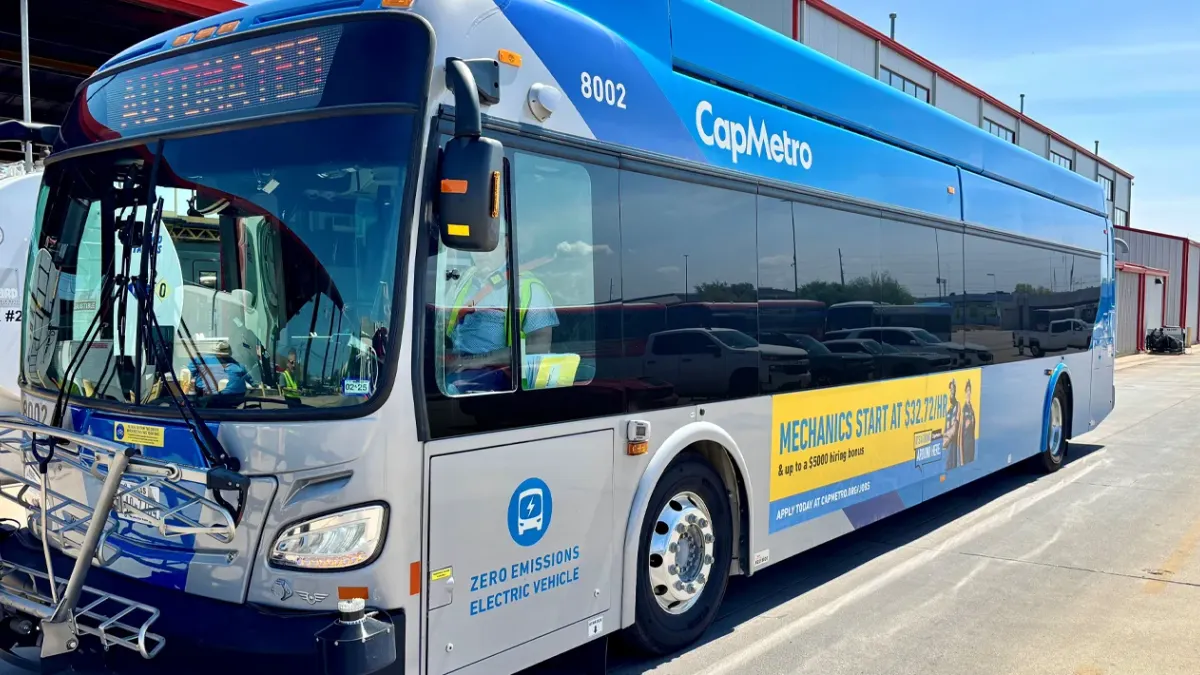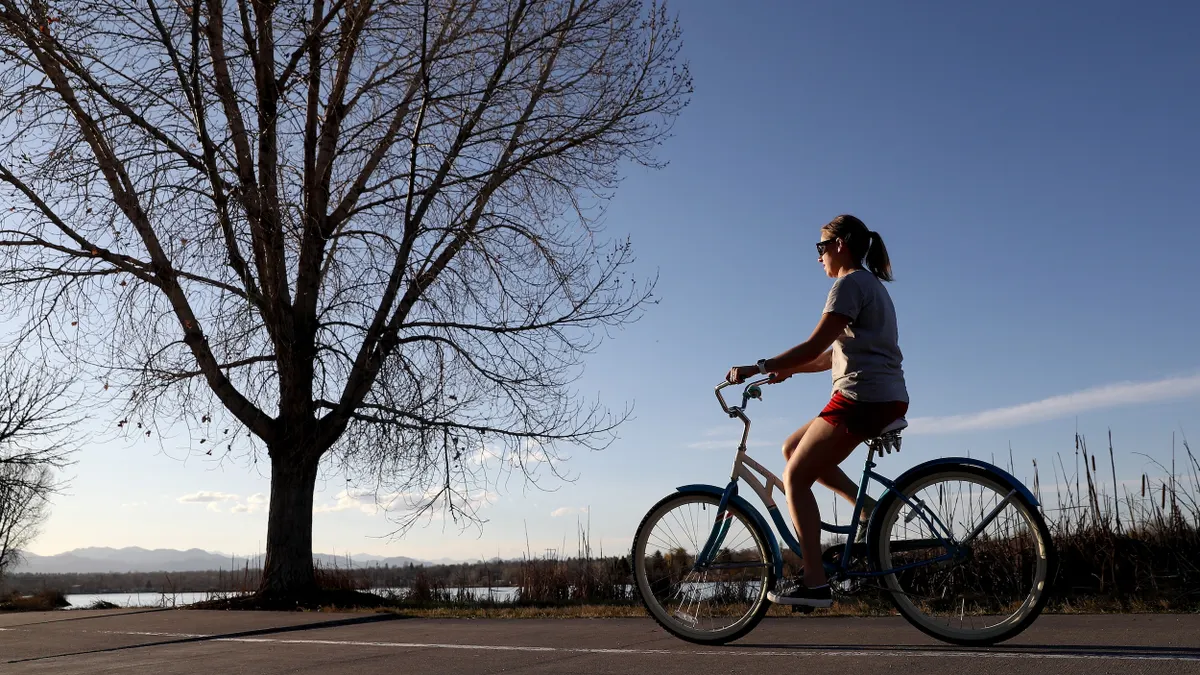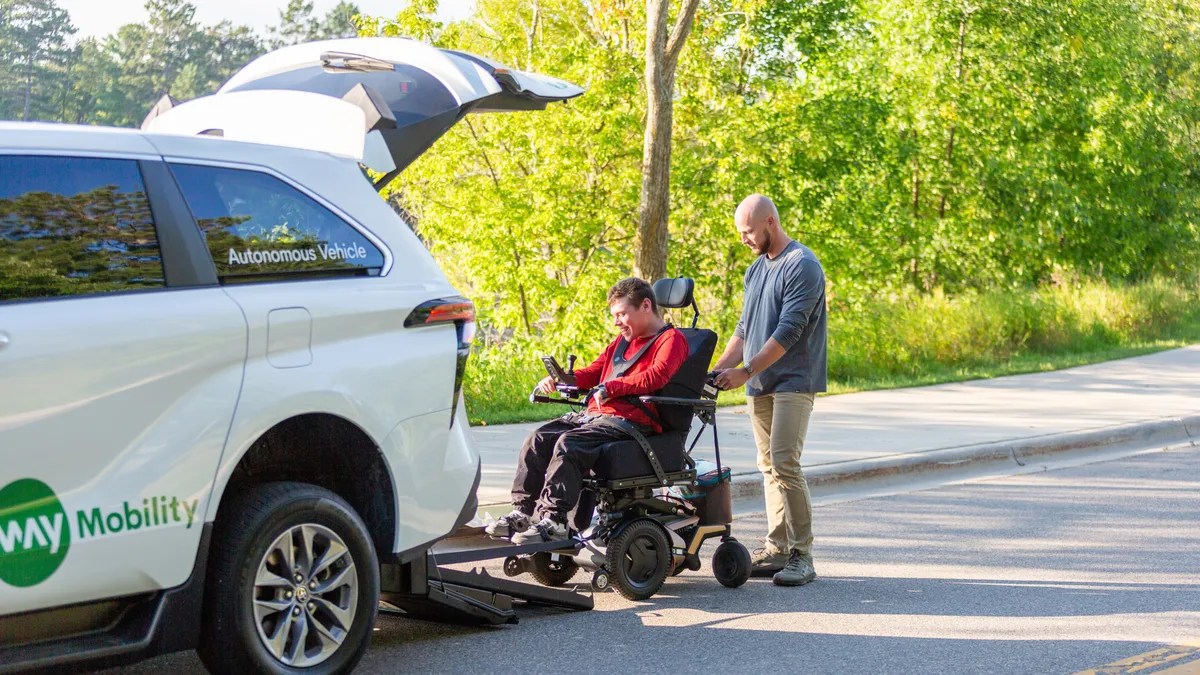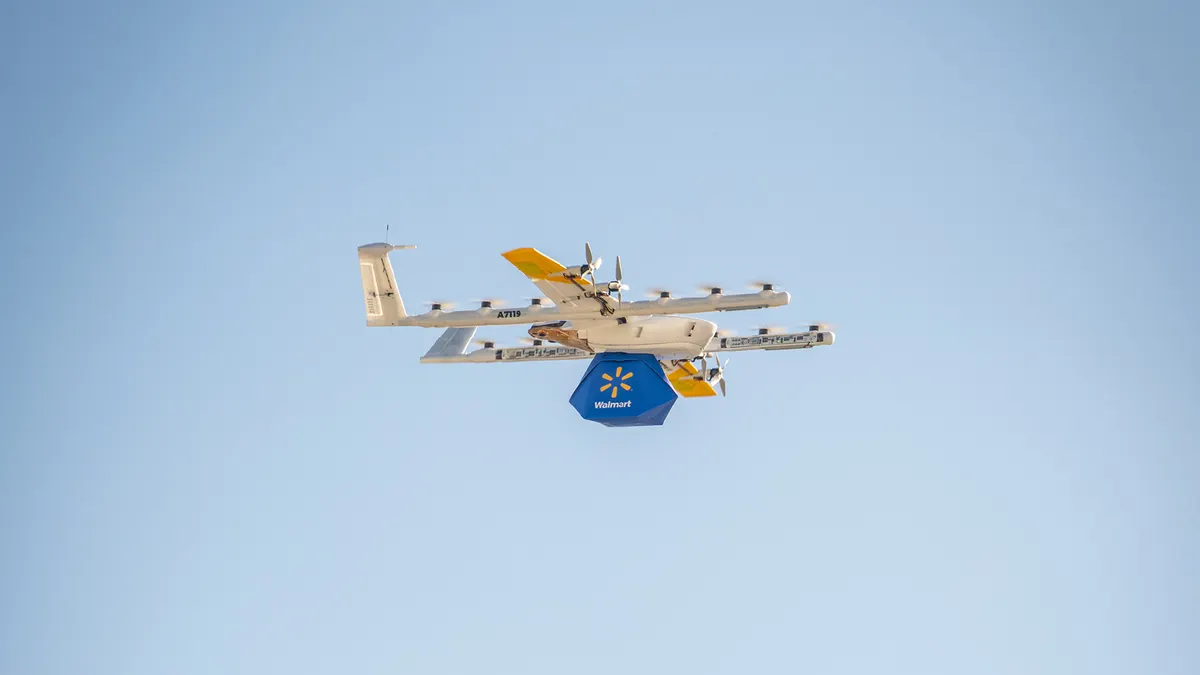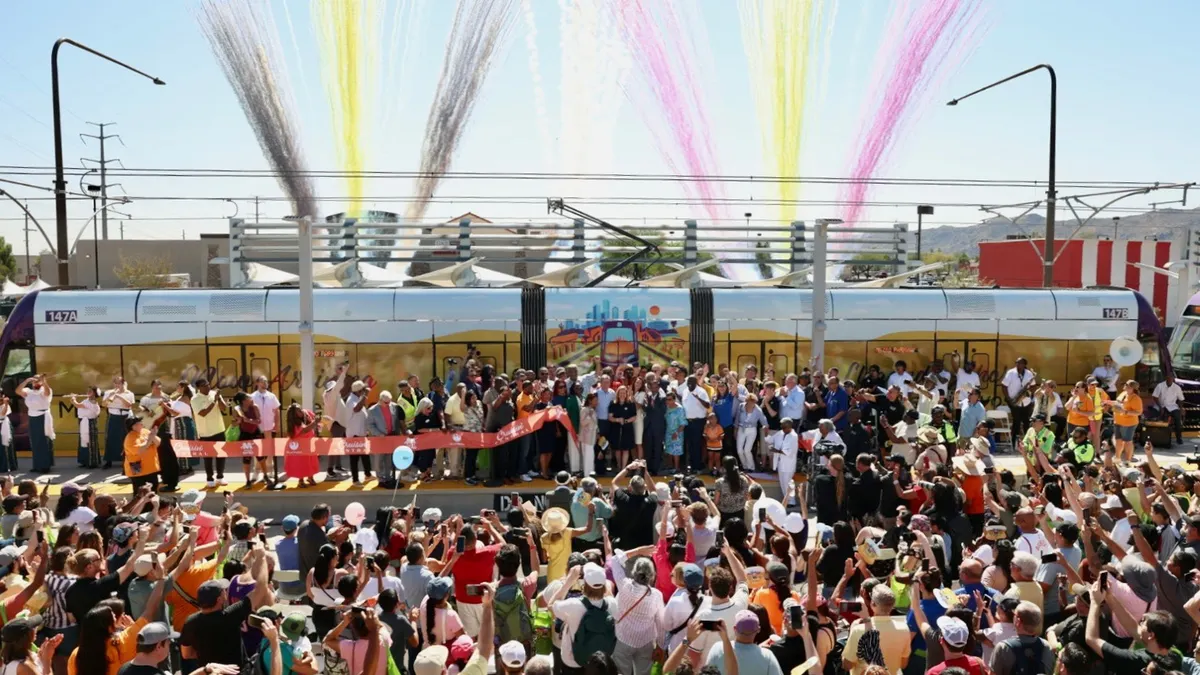Mark de la Vergne was appointed Detroit’s first chief of mobility innovation in late 2016, with a goal of adding new types of mobility service and technologies to what is already offered around the city.
With ride-hailing apps like Uber and Lyft growing in importance globally, de la Vergne got straight to work by helping launch the Detroit Mobility Innovation Initiative, a public-private partnership (P3) that looks to solve mobility gaps, help improve access to public transportation and get people around without the need to own a car.
One pilot already underway is a partnership between Lyft and the Detroit Department of Transportation, giving a $7 Lyft credit to riders who use certain bus stops between midnight and 5 a.m. The plan is to complement the fixed route service with ride-hailing to benefit those who travel late at night.
Smart Cities Dive caught up with de la Vergne at the Meeting of the Minds Mobility Summit in Ann Arbor, MI last week to discuss Detroit’s transit innovations, the possible arrival of electric scooters and the future of public transportation in what has traditionally been a car-reliant city.
This interview has been edited for length and clarity.
Smart Cities Dive: You've spoken of the need to not just pat yourselves on the back when you have a good pilot but find a way forward and make it more permanently funded. How do you go about doing that?
MARK DE LA VERGNE: There's two things. One is building a good problem statement beforehand so that you're very clear on what you're trying to learn from a pilot. Then two is making sure you're doing the work to really understand how [and if] people are using the service. For this initial pilot we're doing with Lyft, users text a code to get another code to use for Lyft. What we're doing is following up with everyone who gets the text message to understand what their motivation was to use the trip to begin with, did they use the code, if they used the code what was their experience, and if they didn't use the code why didn't they use the code?
We've thought this through a lot and thought through the different steps from the customers' standpoint, but we know that putting something new out there, there's going to be lots of questions. So we really want to understand it from the customers' point of view as best we can, and knowing there are lots of different customers, so that when we begin to ask if the pilot is successful or how we scale it, we're not just looking at how many people have used it but how they've used it, how it's a service that's helping people and what can we do to make it better in the future.
Traditionally, there's been a lot of mistrust between governments and technology companies like Uber and Lyft. How do you go about changing that relationship and building trust?
DE LA VERGNE: I think we're looking for partners in the private sector that are eager to learn with us. A lot of these are pilots and we're going to build relationships through this. We're lucky to be where we are that we have a lot of partners in the mobility space that are interested in understanding the same things we're trying to understand. We've got those relationships already built, but as we bring in new types of partners that's what we're going to find out. We're starting small on this both to do the learning and to say with a new partner that we're going to have to build a level of trust and start small to build that relationship.
Some people hear "innovation" and think that it means a shiny new thing. How do you make sure programs benefit everyone, especially those in low-income neighborhoods that can be left behind?
DE LA VERGNE: It's talking to a lot of people, so you really understand their experiences, and then when you build the pilot it's just thinking through each individual step and how that's going to work for different folks. That becomes really what we try and do, and the mayor in particular holds us to a really high standard. When we say, "Here's a new idea," he's going to pick at it from everything he's heard from the community as well to make sure that we're thinking of every single angle. While it is a pilot and something for us to learn from, we want to make sure it's accessible for all Detroiters.
Do you have other pilots on the horizon? What else are you working on?
DE LA VERGNE: We obviously want to continue to explore the idea of microtransit and integrating new types of service with fixed-route, and understand if this is something that can work and if it's something that can be beneficial. We're working on pilots to make it easier and faster to take transit using different types of technology. We're thinking through how we can add more options for people to get around and whether that's car-sharing, carpooling, things like that. We're working with DTE on some electrifications. A lot of different things, but it all gets back to this core idea of how we make it easier for folks to get around.
And now Detroit has the "World's Smartest Intersection." How do you integrate things like that?
DE LA VERGNE: Something like that, we have a very good vendor who's focused on traffic signals and getting traffic around. When we started talking to them about their products, we wanted to look at things beyond just traffic delays. How can we use this to improve operations for transit, reduce emergency vehicle times, make it safer to cross the street? Those types of things, where we feel like we've got something good here but let's expand our thinking so we can integrate the things we hear from our residents all the time.
How do autonomous vehicles fit into Detroit's mobility future?
DE LA VERGNE: We're really supportive of the industry's efforts, particularly around the safety of AVs. But at the same time, our focus is to make sure people can get to a place, not necessarily if there's a driver or not behind the wheel. In this space, what we're trying to do is simply learn in both directions, so we can better understand the technology and the needs and how things are going to change, and the industry can hear from us on not just use cases but hear from the police department on how they interact with vehicles so they can begin to get that on-the-ground learning. When you start to talk about how a vehicle interacts with a city, there's lots of different people that work in a city that have those types of interactions.
Electric scooters and dockless bikes are being piloted, and it's been a mixed few months for them in cities. If a company comes in tomorrow wanting to bring in their products, what happens from your point of view?
DE LA VERGNE: Right now, we're currently building a strategy on this space. Just like everything, we're going to be really focused on making sure that we can integrate a new type of technology that's being in service and making sure it benefits everyone in the city. Those are the two biggest principles we're going to be sticking with. We're trying to move quickly, because this space is moving quickly. Nine months ago, no one was talking about electric scooters and now it's all the time. It's a new challenge for cities of how we can react quickly to deal with these new types of technologies that do have a benefit to get people around.








